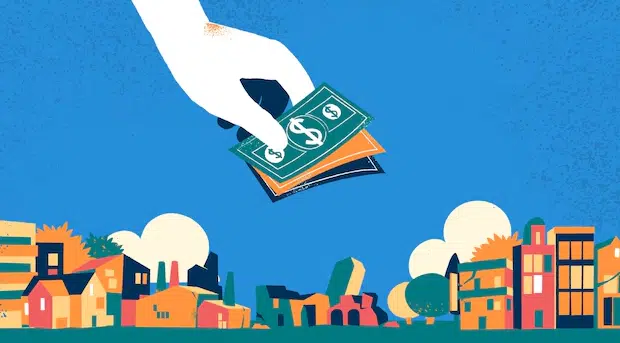Microcredit institutions play a pivotal role in transforming the financial landscape of urban areas in Africa. By providing small loans to individuals who lack access to traditional banking systems, these financial entities are making strides in alleviating poverty. Urban centers across the continent face unique challenges concerning poverty, with residents often caught in a cycle of economic hardship.
Here, microcredit enterprises have emerged as a beacon of hope, offering the necessary capital to support small business ventures and other economic activities. As we delve deeper, we explore how these financial systems are fundamentally reshaping urban poverty dynamics in Africa.
The emergence of microcredit institutions

The advent of microcredit organizations in Africa has been a significant turning point in addressing urban poverty. Over the past few decades, these entities have proliferated across the continent, bringing financial services to those previously excluded from the traditional banking sector. The essence of microcredit is to provide small, unsecured loans, which empowers the impoverished population to engage in entrepreneurial activities.
Microcredit entities originated with the vision to empower individuals by offering minimal yet vital financial resources. This empowerment fosters entrepreneurial spirit among urban dwellers and catalyzes community development at the grassroots level. Unlike traditional banks, these institutions understand the nuances and challenges of the urban poor and tailor their services to meet these specific needs.
Beyond financial inclusion, these organizations also advocate for social change. By providing capital without the need for collateral, microfinance institutions democratize financial systems, enabling underserved urban populations to pursue self-reliance and economic advancement. They have also been instrumental in promoting gender equality, as many microcredit initiatives specifically target women, recognizing their role as central to economic improvements at the community and family levels.
Success stories of microcredit in African cities
Across various African cities, there are numerous success stories that illustrate the profound impact of microfinance institutions. In places like Nairobi and Lagos, individuals who once struggled to make ends meet have grown small businesses, securing steady income through the aid of micro loans. For instance, many women entrepreneurs have opened thriving markets and shops, improving not only their families’ livelihoods but also contributing to the local economy.
In Johannesburg, microcredit has enabled several micro-entrepreneurs to diversify their business offerings. Such financial assistance has allowed them to experiment with different business models and invest in necessary tools and inventory, ensuring their stores remain competitive and relevant. Success stories from these cities serve as positive reinforcement for the potential of microcredit in reducing urban poverty and spreading economic gains across society.
These triumphs highlight the versatility and adaptability of microcredit institutions. They show that with the right financial backing, urban dwellers can overcome barriers and participate in economic ventures that were once out of reach. Furthermore, by focusing on sustainable growth, microcredit contributes to a resilient urban economy, equipped to withstand fluctuations and crises, thereby stabilizing communities.
Challenges in microcredit implementation
Despite its benefits, the implementation of microcredit strategies is not without challenges. One primary hurdle is ensuring that funds are used effectively and that recipients are educated in financial management. Many borrowers lack formal education on handling finances, which can lead to mismanaged funds and unmet loan terms.
Another challenge lies in reaching the most marginalized groups in urban settings, who may be hesitant or have limited access to microcredit services. Financial institutions are finding innovative ways to engage these individuals, such as digital platforms and mobile banking, which have been instrumental in expanding reach and efficiency.
The future of microfinance in urban Africa
The trajectory of microfinance as a tool to combat urban poverty in Africa is promising. As technology advances, we expect to see greater integration of digital solutions with microcredit services, enabling more people to benefit from these financial offerings. Mobile technology, specifically, will play a significant role in expanding access, allowing users to apply for and manage loans through their phones.
Moreover, there is potential for partnerships between microcredit entities and larger financial institutions, which could lead to increased funding and expansion of services. Such alliances may enhance the ability of microcredit institutions to reach the farthest corners of urban areas, ensuring those in need receive adequate support to uplift their economic status.
Policy and government support
For microfinance to continue thriving, supportive policies and government intervention are crucial. Governments can play an active role by creating regulatory frameworks that ensure transparency and fair interest rates, protecting consumers while nurturing the growth of microfinance entities.
In addition to regulation, governments can facilitate partnerships between microfinance organizations and other sectors, enhancing resource sharing and introducing innovative approaches to service delivery. Policy facilitation can also improve financial literacy programs, ensuring that those receiving microcredit understand and maximize the benefits of their loans.



